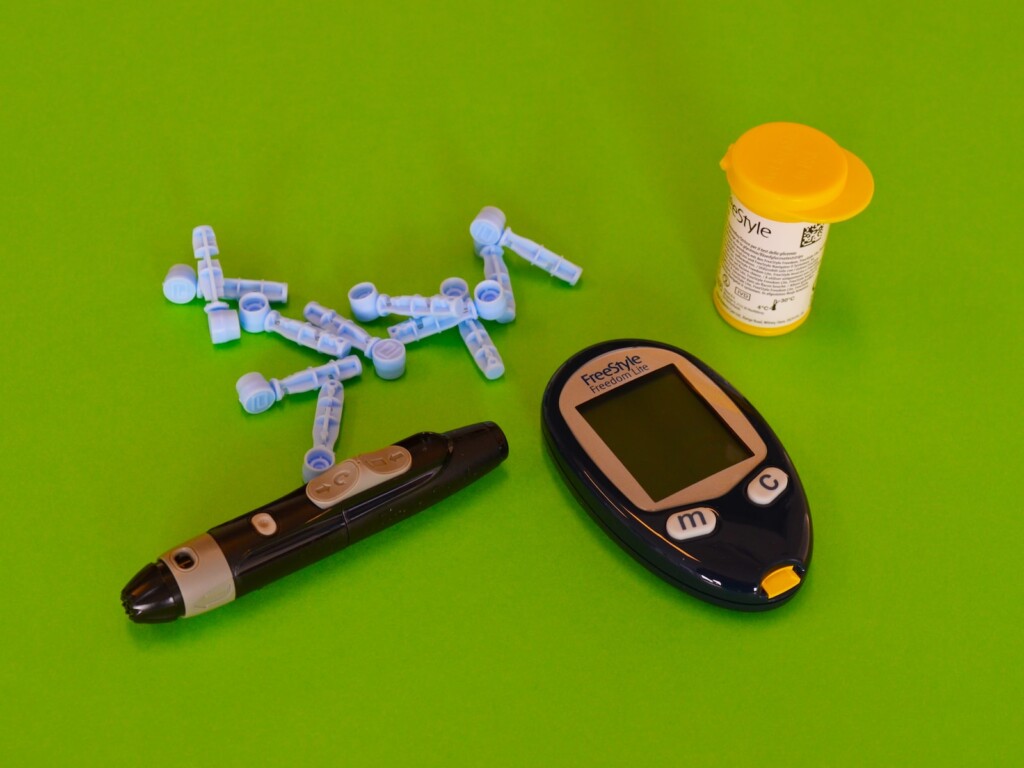Cheezy Cheez Casserole
Cheezy Cheez Casserole
Cheezy Cheez Casserole

Warm, bubbly casseroles are the epitome of “home,” especially when they’re stuffed with tons of cheese. This delicious dish uses raw cashews for the cheezy flavor.
- Large Sauce Pan
- 1 cup Cooked/Mashed Butternut Squash (You can buy frozen and cook in microwave)
- ½ cup Raw Cashews
- 1 ½ cup Non-Dairy Milk
- ½ cup Nutritional Yeast Flakes (You may use more if need be for your desired taste)
- 2 Tbsp Arrowroot (Thickener)
- 2 Tbsp Dijon Mustard
- 1 Tsp Garlic Powder
- 1 Tsp Sea Salt
- ½ Tbsp Lemon Juice
- ¼ Tsp Black Pepper
- 12 oz Whole Grain Macaroni (You can also use gluten free or penne pasta)
- 1 cup Peas (Optional; You can use chopped broccoli or asparagus)
- ¾ cup Whole Grain Bread Crumbs (You may use gluten free bread crumbs with 1 Tsp garlic power mixed in)
- Pour cooked squash, cashews, milk, nutritional yeast, mustard, garlic powder lemon juice, salt, and pepper into a heavy-duty blender and blend til smooth, add arrowroot, and blend til smooth and creamy. Note: I usually pulse the cashews in Vitamix first and then all rest of the ingredients.
- Transfer to a saucepan over medium heat and whisk until thickened. Constantly stir, the sauce will thicken quickly and you don’t want to burn. If you prefer thinner, just add water.
- Cook the pasta noodles according to the directions.
- Pour drained pasta into the baking dish; pour sauce and peas and combine.
- Sprinkle top with bread crumbs
- Bake uncovered for 20-35 minutes until golden brown and bubbly. I’ve even put the oven on broil for the last couple of minutes to really brown the top.
This is so good, I usually double the recipe for cheez sauce and use the extra during the week over steamed veggies, baked potato, or whatever else might be cooking!!!!
Add a Mexican spice blend to the sauce with some green chiles, chopped red peppers, and pinto beans for another twist on the recipe.
Recent Recipes
February Is Heart Health Month

February is National Heart Health Month!
Let Heart Health Month serve as a reminder that heart disease remains the number one killer of men and women in the United States. You have the power to change this deadly statistic, improve your heart health, and live longer healthier lives. This can be accomplished simply by adopting sensible healthy eating habits in addition to a regular exercise routine.
A great first step is to learn your own personal risk factors that make you more likely to develop heart disease. Certain risk factors like aging or having a family history of heart disease can’t be eliminated. But risk factors such as high cholesterol, high blood pressure, smoking, excess weight, diabetes, and physical inactivity can be changed. It’s not uncommon to have more than one risk factor, so the goal should be to lower or eliminate as many risk factors as you can. Compounding these risk factors tends to worsen the effects of the others.
Studies have proven that middle-aged adults with one or more elevated risk factors, were much more likely to have a heart attack or other major cardiac events during their later years than people with lower levels of risk factors.


Healthcare professionals agree that people with at least 2 major risk factors were 3 times as likely to die from cardiovascular disease as those with none or 1 risk factor. Control of your heart risk factors begins by knowing your blood cholesterol and blood pressure numbers and determining if your weight is in the healthy range.
Regular exercise is a simple way to reduce your risk of heart-related problems and a host of other health-related maladies. Your goal has to be making physical activity a pleasure rather than a chore by choosing enjoyable. Strive for making your activities as aerobic as possible. Even taking the stairs instead of an elevator can make a difference, but the newest recommendation is for 30 minutes of aerobic activity a day to lower your risk of heart disease, stroke, hypertension, and diabetes.
If you happen to be a smoker, stop. People who smoke are up to 6 times more likely to suffer a heart attack than nonsmokers. The risk of heart attack increases with the number of cigarettes smoked each day. If you quit smoking, you will immediately begin to reduce your heart attack risk. one year after you stop smoking, your risk will have dropped by more than 50 percent.


I’ve written about heart attack risks and ways to reduce those risks, but what does a heart attack actually feel like? The most common symptoms include pain in the chest, shoulders, arms, neck, jaw or back, shortness of breath, irregular heartbeat or palpitations (arrhythmia), and fatigue.
Please be aware that the symptoms and warning signs of a heart attack can vary from person to person. If you’ve already had a heart attack, it doesn’t mean that your symptoms will be the same if you have another one.

Finally, I’d like to share an ancient Chinese proverb to send you along on your journey to a healthy heart. This graphic has become one of my personal favorite motivational aids. I hope it helps you to take your first step on your journey.

Membership Newsletter Volume 3 – March 2023 – The Truth About MSG
This Month’s Topic:
The Truth About MSG
Monosodium Glutamate (MSG):
Monosodium Glutamate (MSG) was originally invented in 1908 by Japanese biochemist Kikunae Ikeda. He was attempting to isolate and duplicate the taste of kombu, an edible seaweed used as a base for many Japanese soups. He discovered Glutamate, filed a patent, and began to market it as a flavor enhancer.
Glutamate adds a new dimension to the flavor of food referred to as umami. Prior to the discovery of Glutamate, our taste sensations were described as sweet, sour, bitter, and salty. With MSG in the picture, our tastes now include umami, which is described as a savory or meaty flavor.
Produced through fermentation today, MSG is most commonly associated with restaurant Chinese food, but it is very frequently used as an added flavor enhancer in fast foods, frozen meals, canned soups and vegetables, processed meats, and potato chips.
In the interest of brevity, I’m not going to cite any specific studies individually, but I will say that the topic has been studied and hotly debated for decades. The Food and Drug Administration (FDA) has classified MSG as a food ingredient that’s “generally recognized as safe”, but the use of MSG continues to remain a topic of discussion in some circles, so the FDA mandates food label inclusion of this controversial ingredient.
I should begin by stating that this additive has the potential to be harmful. I have to begin with the fact that MSG adds large amounts of Sodium to your diet. I’m no fan of Sodium in any form. MSG also has side effects that range from obesity to liver damage. In some susceptible people, consumption of MSG can trigger short-term symptoms such as asthma attacks, chest pain, nausea, rapid or fluttering heartbeats, or worsened migraine headaches.
MSG can also trigger Chinese Restaurant Syndrome (CRS), a collection of symptoms including sweating, headache, flushing, and, in more serious cases, swelling of the throat and chest pain. In defense of Chinese restaurants, however, some studies have
concluded that they can be attributed to overuse or inconsistent use of MSG.
I’ll try to explain some of the science behind my aversion to MSG. I have to begin with obesity. Most people cringe when they hear the word obesity because, let’s face it, people across the globe are getting larger, so the odds are pretty good that you know someone with a weight issue. One research study concluded that MSG given to newborn mice increases their body weight by almost 8 percent. What seems like an insignificant percentage could really be quite staggering when put into perspective.
Let’s equate that very same 8% increase in body weight to that of a 200-pound man. I’m using an adult male because other research also indicates similar changes to adults who consume too much MSG. That 8% would increase this man’s weight by 16 pounds bringing him up to a whopping 216 pounds! Increases in total cholesterol, triglycerides, VLDL, and LDL (both types of “bad” cholesterol), body mass index, body fat, and obesity in general, are associated with MSG use and can all occur.





MSG Side Effects: Brain Damage and Chemical Changes
There are also some very frightening chemical changes that occur in the body as a result of consuming MSG.
Adiponectin, a protein critical to regulating blood sugar and energy use, is lowered by 60 percent. This reduction causes an increase in blood sugar levels and a decrease in metabolism. This combination can cause weight gain and food cravings.
The chemical messenger Leptin becomes unrecognizable to the brain. Leptin is normally released by fat cells and then travels to the brain to deliver the signal to stop eating.
When people consume MSG, receptors in the brain become incapable of receiving this signal. Our bodies adapt and try to increase Leptin production by fat cells, but the MSG does it’s a job more efficiently, so the damage is done (at least temporarily). The brain’s perceived lack of Leptin leads to an increased appetite.
MSG = Liver Damage
MSG causes the inflammation of blood vessels in the liver, the destruction of red blood cells, and the death of liver cells. Studies also indicate that it stimulates the creation of chemicals that are responsible for inflammation.
As if that weren’t enough, most MSG-laden foods are also disproportionately high in trans fats. This combination of MSG and trans fats can cause the development of nonalcoholic fatty liver disease (a condition in which fat is deposited inside the liver often leading to cirrhosis). Fatty liver disease can trigger insulin resistance, resulting in high blood sugar and blood insulin levels.


Diabetes
Diabetes is a type of insulin resistance. Insulin is being produced and released into the bloodstream, but body cells are unable to use it effectively. This prevents glucose from passing into cells, resulting in high blood sugar, decreased energy, and increased appetite.
Pregnant Mothers & Newborns
Lest we forget the most important of all, let’s consider our new mothers and those soon to be. Mothers who are pregnant or nursing should be extremely careful to avoid MSG, and baby food ingredients should be carefully checked as well. Infants and unborn children can also suffer brain damage due to overexposure to MSG. MSG has a stimulatory side effect on the brain which can damage the brain cells of newborns. This damage often leads to convulsions and seizures during infancy.


MSG by any other name is still…MSG!
Since the FDA requires manufacturers to list MSG on the food label, one simply needs to know what to look for. MSG can be listed by any of the below names. The first list ALWAYS contains MSG, while the second list CAN contain it. Commit them to memory, it could help save your life!
These ingredients ALWAYS contain MSG:
- Autolyzed yeast
- Calcium caseinate
- Gelatin
- Glutamate
- Glutamic acid
- Hydrolyzed protein
- Hydrolyzed corn gluten
- Monosodium glutamate
- Monopotassium glutamate
- Natrium glutamate
- Sodium caseinate
- Textured protein
- Yeast nutrient
- Yeast extract
- Yeast food
These ingredients CAN contain MSG:
- Barley malt
- Bouillon
- Broth
- Carrageenan
- Citric acid
- Enzymes
- Enzyme modified
- Fermented
- Flavors and flavorings
- Maltodextrin
- Malt extract and flavoring
- Natural beef flavoring
- Natural chicken flavoring
- Natural flavors and flavorings
- Pectin
- Protein fortified
- Protease
- Protease enzymes
- Ultra-pasteurized
- Seasonings
- Soy sauce, (sauce extract, protein, protein isolate, concentrate)
- Stock
- Whey protein, (protein concentrate, isolate)
Some of the most common food sources of MSG include:
- Hydrolyzed vegetable protein
- Miso, tempeh, soy protein
- Processed meats and fish, including ham
- Soup, broth, bouillon cubes
- Soy sauce, fish sauce, oyster sauce
- Tomato and vegetable sauces
- Yeast extracts
Time to begin reading your labels more carefully! The best way to avoid MSG is to avoid fast food and frozen, pre-packaged meals. Be especially cautious of canned soups and rice, even at restaurants.


